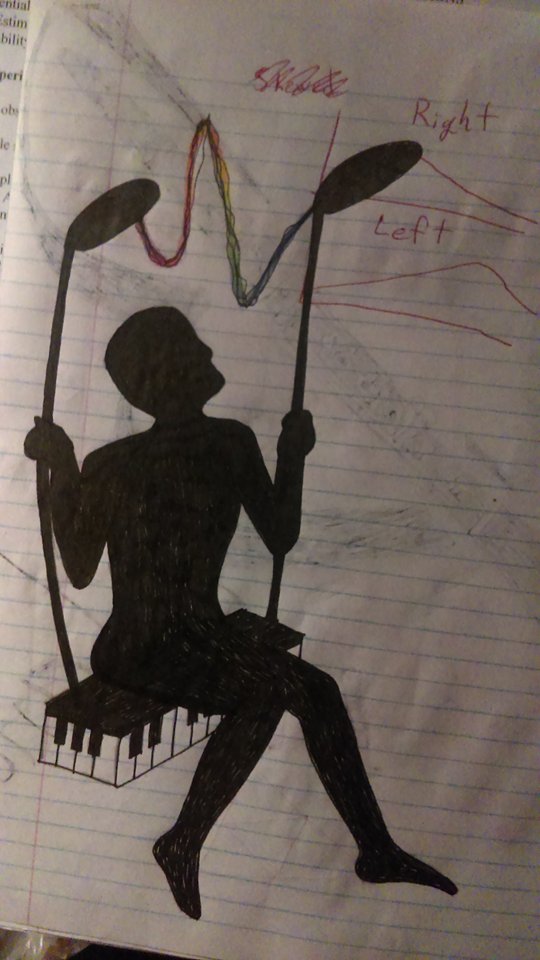So, new semester is completely underway and I’m learning to ride the waves of stress once again. It’s going well so far: remembering to drink water, get ~7.5hrs of sleep, and making time for little bits of progress instead of putting things off until I have multiple hours to do a chunk of work. However, I still have my moments of floundering and just not knowing what to work on since there is so much to do… I do have a notebook that I’m using for class notes, to-do lists, and journalling, which helps to periodically flush out my brain so I can concentrate on doing the work rather than just managing the work I have to do. This is why being a Project Manager is its own position in offices, because keeping track of everything AND doing all the work takes a huge toll on concentration. So, just to clear out my head right now, I’m going to start another running to-do list here since it worked well before.
Goals that occupy brain space:
- doing daily stretches with the goal of gaining enough flexibility to sit in lotus position while meditating
- doing 10 minutes of yoga to increase my strength, flexibility, and focus
- generally being more mindful of my posture and trying to engage my core muscles instead of feeling all my tension in my back, shoulders, and neck, because I think that’s the main reason I have issues with deep breathing and getting through long phrases in my clarinet repertoire
- devoting time to spiritual health through meditation, piano improv, and reiki self-treatments, because those are what gives me a sense of greater focus and connection with myself and others
- preparing for UPEI’s Dr. Frances Gray Performance Competition (practicing Poulenc’s clarinet sonata)
- making time for research journal entries
- making consistent progress in gathering my knowledge base for my Inquiry Methods project
- planning my album that I have to make in the month of February for Business of Music
- being the Project Manager for the concert we have to put on in Business of Music
- keep up with the weekly readings for Business of Music
- planning and budgeting for my tattoo
- preparing for my Directed Studies recital (why do I get myself into all this work?)
- being mindful of where I invest my time and ensuring that I’m living according to my principles and encouraging my own self-discovery
- making time to listen to friends
- regularly reviewing and reflecting on notes for my Theory of Computing class (a practice that is suggested throughout university, but I have never found to be necessary until now… so I need to start a completely new habit if I want to have a hope of getting through that course…)
- scheduling a time to get someone to listen to me sing so I can find out if I’m good or not, and whether or not I need some lessons to get me to a level where I can be comfortable singing in front of people (specifically, I want to be good enough to sing in our Music Department’s Spring Variety Show… I have never let anyone hear me sing before, not even my family… so this has always been a huge discomfort for me, but I LOVE to sing, so I really want to overcome this… At this moment, I would be more comfortable stripping in front of people than singing in front of people, because singing has always felt too vulnerable to me, but I’ve gained plenty of body confidence from being in a long-term relationship.)
- I should make time to schedule an appointment with a counselor, but I keep putting it off because I feel too busy and I don’t know what I would talk about, but I’m supposed to try to see a counselor for my anxiety… but, it’s getting better? So I feel like I’d just go in there and say “yeah, I feel terrible sometimes, but I’m way better than I was a year ago, and I’m already taking a bunch of steps to get better, and I have a really good support system of friends and family already… so… shrug?”
- preparing for music festival (memorizing Debussy’s Premier Rhaspodie and some second piece that I haven’t yet decided)
- preparing for National Youth Band
Basically, I’m pursuing self-discovery and actively striving for growth through a variety of lenses: physical, mental, and spiritual health; balancing work and relaxation; rounding out myself (expanding areas that have been neglected due to a fear of failure/mediocrity, like time management, singing, and yoga); and all of these things are basically just the same thing being said in different ways. I am both finding and shaping myself with everything I do.
I have all these things to do, and they can all help me be a better person, but sometimes the work just feels tedious, so it’s hard to take the time to sit down and just DO THE THINGS.
Now I’m going to take at least an hour just to look into schools that have programs for electronic music, so I can assemble a bit of my knowledge base, then I’ll take a break, then I’ll review my notes for Theory of Computing, then another break, then I’ll get started on the readings for Business of Music.














